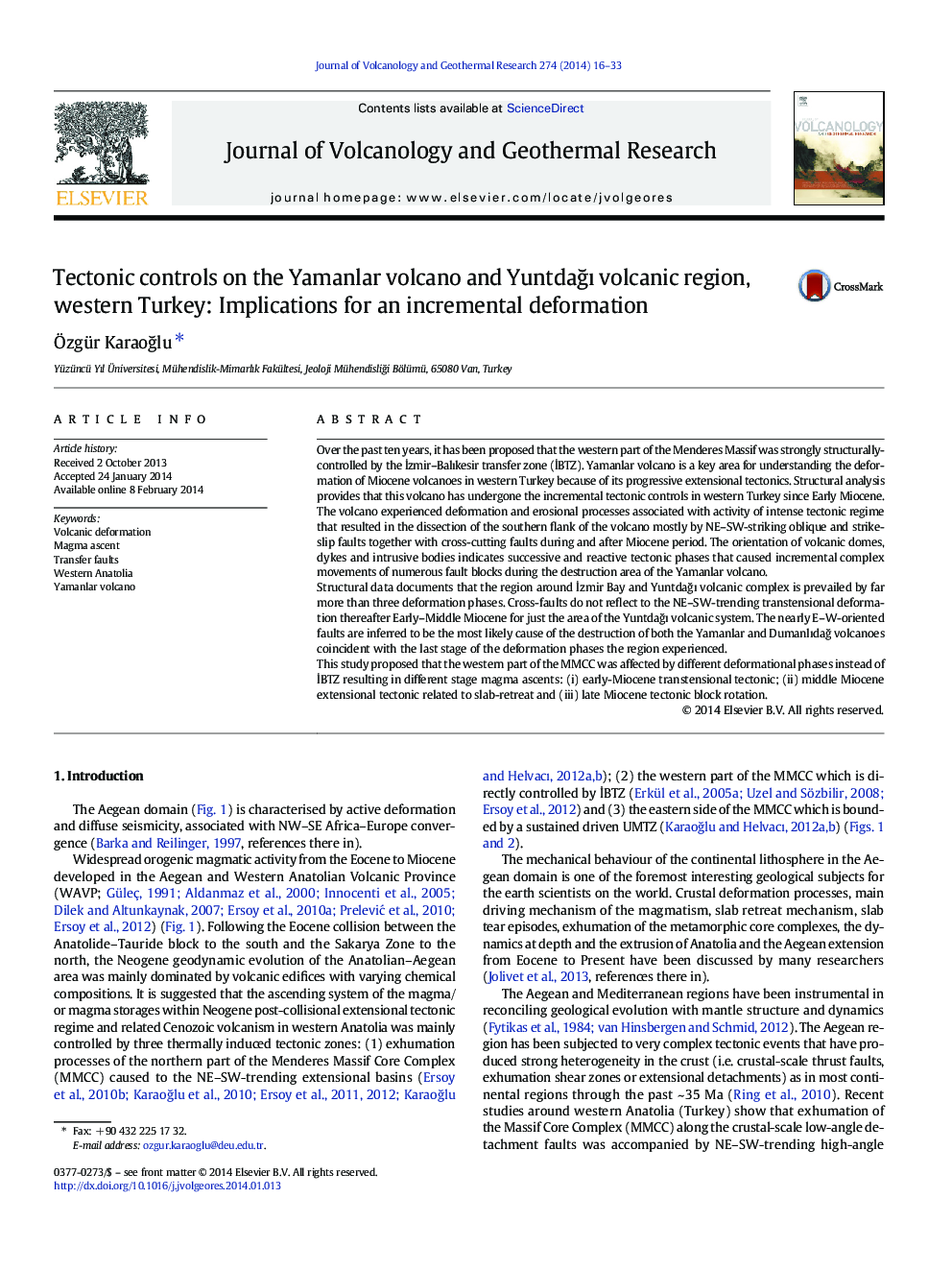| Article ID | Journal | Published Year | Pages | File Type |
|---|---|---|---|---|
| 4713258 | Journal of Volcanology and Geothermal Research | 2014 | 18 Pages |
•Yamanlar volcano experienced intense structural deformation and erosional processes.•Orientation of volcanic structures indicates successive and reactive tectonic phases.•IBTZ fails to explain mechanical behaviour of the region since Early Miocene.•Migration of the magmatism associated to slab-retreat continued to the southward direction.
Over the past ten years, it has been proposed that the western part of the Menderes Massif was strongly structurally-controlled by the İzmir–Balıkesir transfer zone (İBTZ). Yamanlar volcano is a key area for understanding the deformation of Miocene volcanoes in western Turkey because of its progressive extensional tectonics. Structural analysis provides that this volcano has undergone the incremental tectonic controls in western Turkey since Early Miocene. The volcano experienced deformation and erosional processes associated with activity of intense tectonic regime that resulted in the dissection of the southern flank of the volcano mostly by NE–SW-striking oblique and strike-slip faults together with cross-cutting faults during and after Miocene period. The orientation of volcanic domes, dykes and intrusive bodies indicates successive and reactive tectonic phases that caused incremental complex movements of numerous fault blocks during the destruction area of the Yamanlar volcano.Structural data documents that the region around İzmir Bay and Yuntdağı volcanic complex is prevailed by far more than three deformation phases. Cross-faults do not reflect to the NE–SW-trending transtensional deformation thereafter Early–Middle Miocene for just the area of the Yuntdağı volcanic system. The nearly E–W-oriented faults are inferred to be the most likely cause of the destruction of both the Yamanlar and Dumanlıdağ volcanoes coincident with the last stage of the deformation phases the region experienced.This study proposed that the western part of the MMCC was affected by different deformational phases instead of İBTZ resulting in different stage magma ascents: (i) early-Miocene transtensional tectonic; (ii) middle Miocene extensional tectonic related to slab-retreat and (iii) late Miocene tectonic block rotation.
